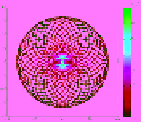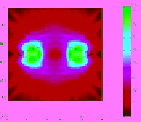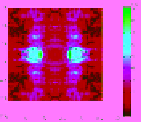Image Processing Reference
In-Depth Information
table 10.22
A Comparison of Reconstructed Images for Two Triangle Targets
Each with Height 3λ Using the Born Approximation, and Processing Sources
Independently and Recombining in Images Space, and Cepstrum Space
Freq = 5 GHz,
λ
= 60 mm, B/H = 120/180 mm, sources = 36,
Resolution = 256
×
256, scale = 1m
combined ewald
circles
Born
image space
cepstrum space
Note:
Thirty-six sources are used with varying numbers of receivers equally and randomly spaced to show the
effects of aliasing and anti-aliasing techniques.
ReFeRenCeS
Candes, E. J. and Romber, J. (2005, January 25). Practical signal recovery from
random projections.SPIE Vol. 5674, Computational Imaging III, pp. 76-86.
Candes, E. J. and Wakin, M. B. (2008, March). An introduction to compressive
sampling.
IEEE Signal Processing Magazine
, 25(2), 21-30.
Lustig, M., Donoho, D., and Pauly, J. M. 2007. Sparse MRI: The application
of compressed sensing for Rapid MR imaging.
Magnetic Resonance In
Medicine
, 58(6), 1182-1195.
Shahid, U. 2009.
Signal Processing Based Method for Solving Inverse Scattering
Problems.
PhD Dissertation, Optics. University of North Carolina at
Charlotte, Charlotte: UMI/ProQuest LLC.






















Search WWH ::

Custom Search